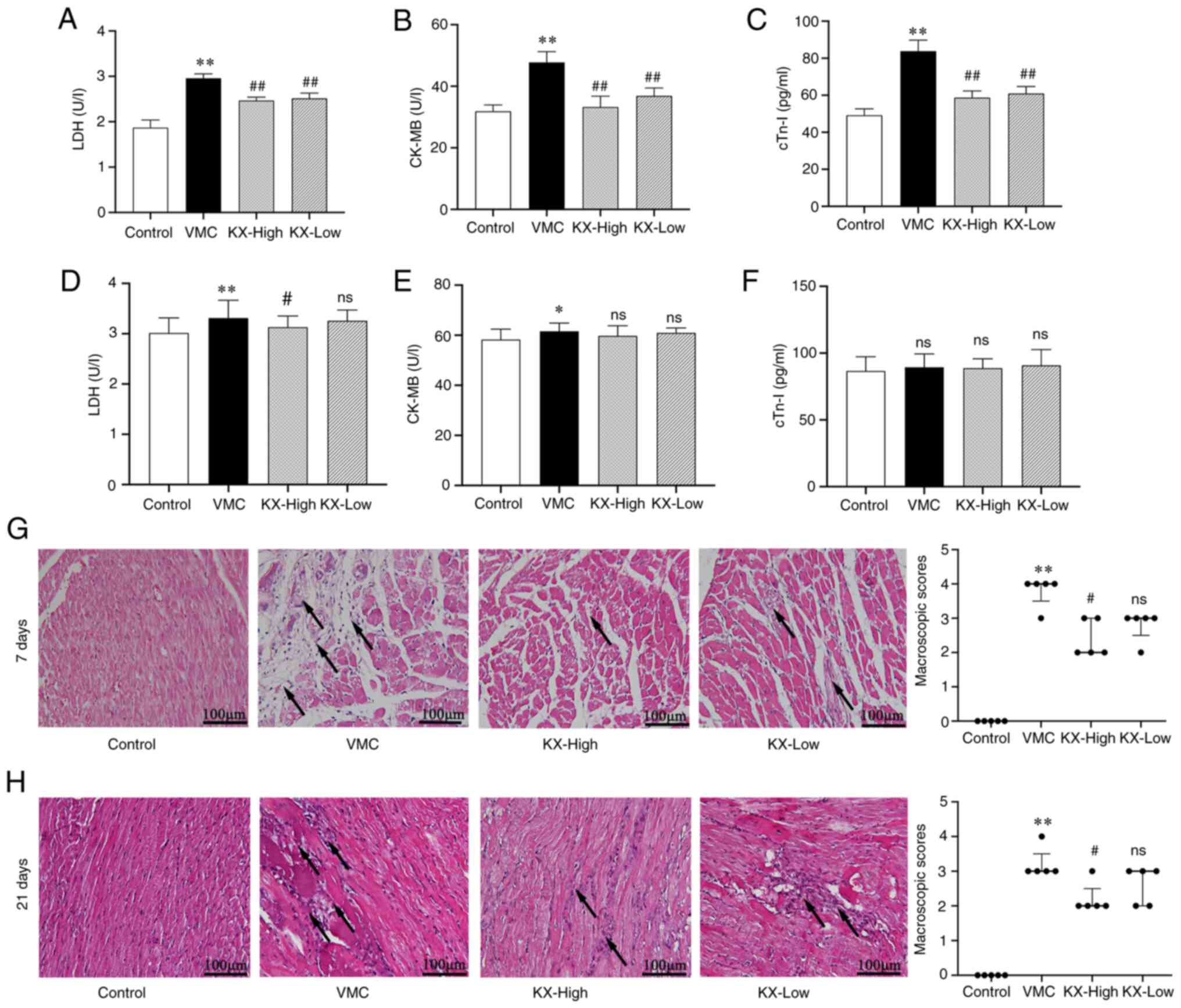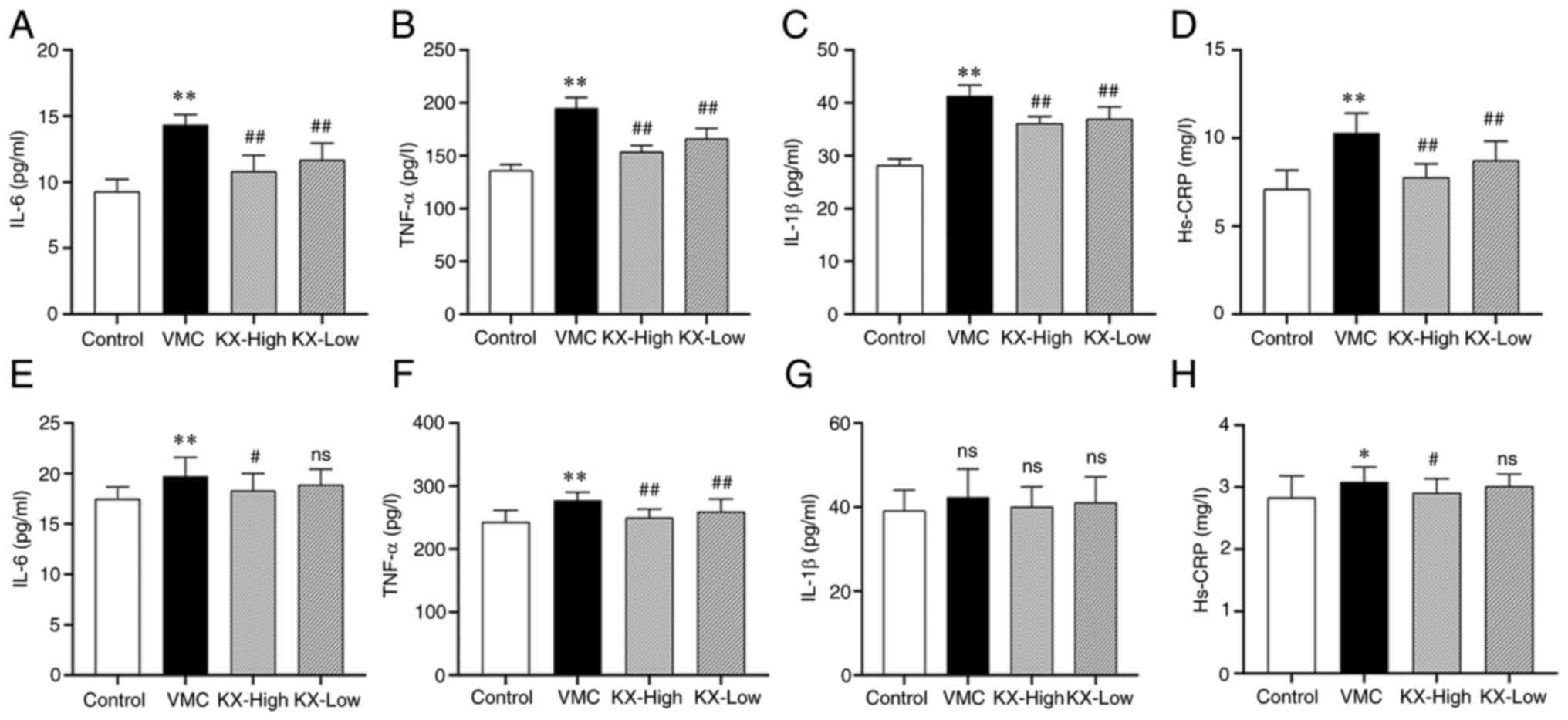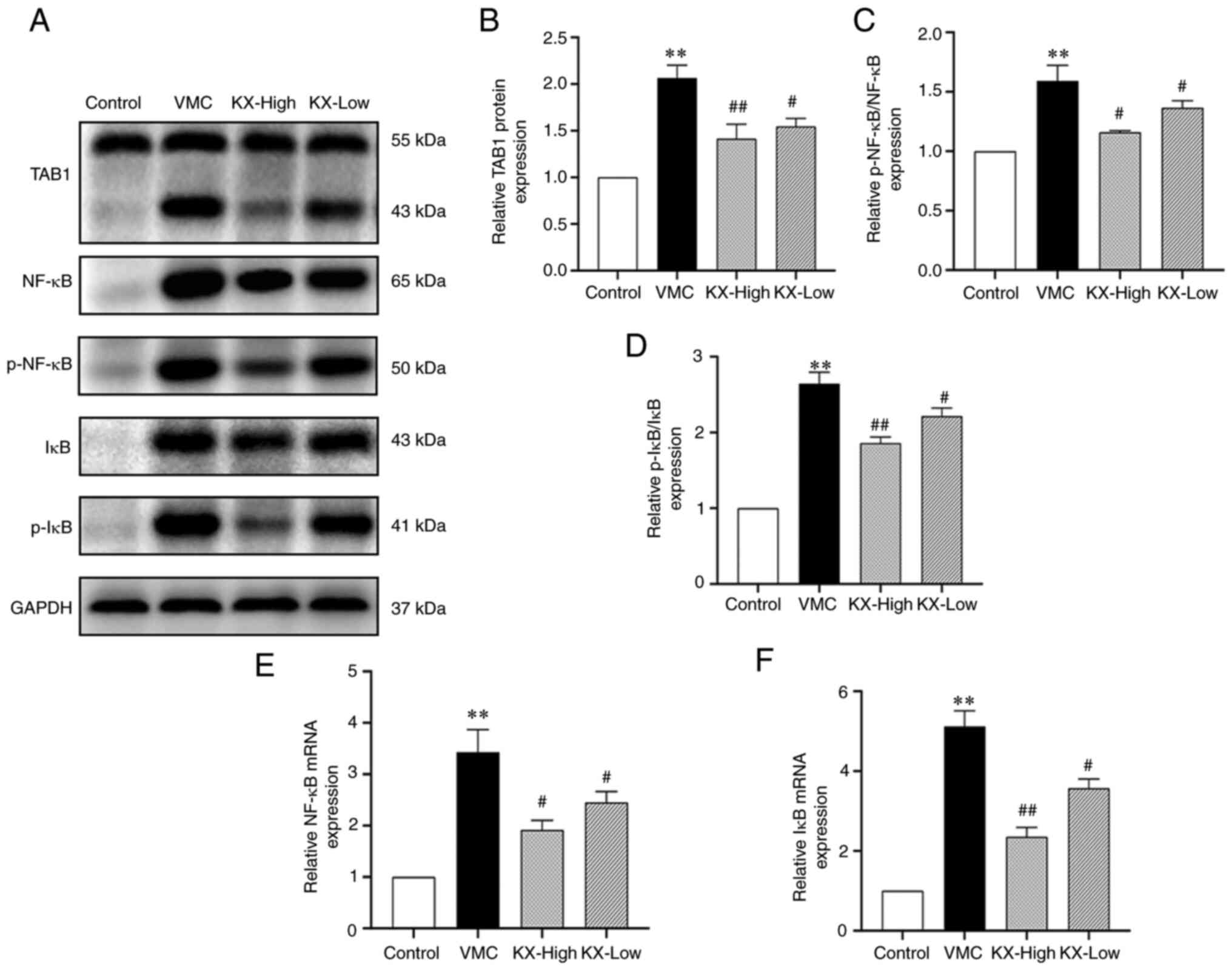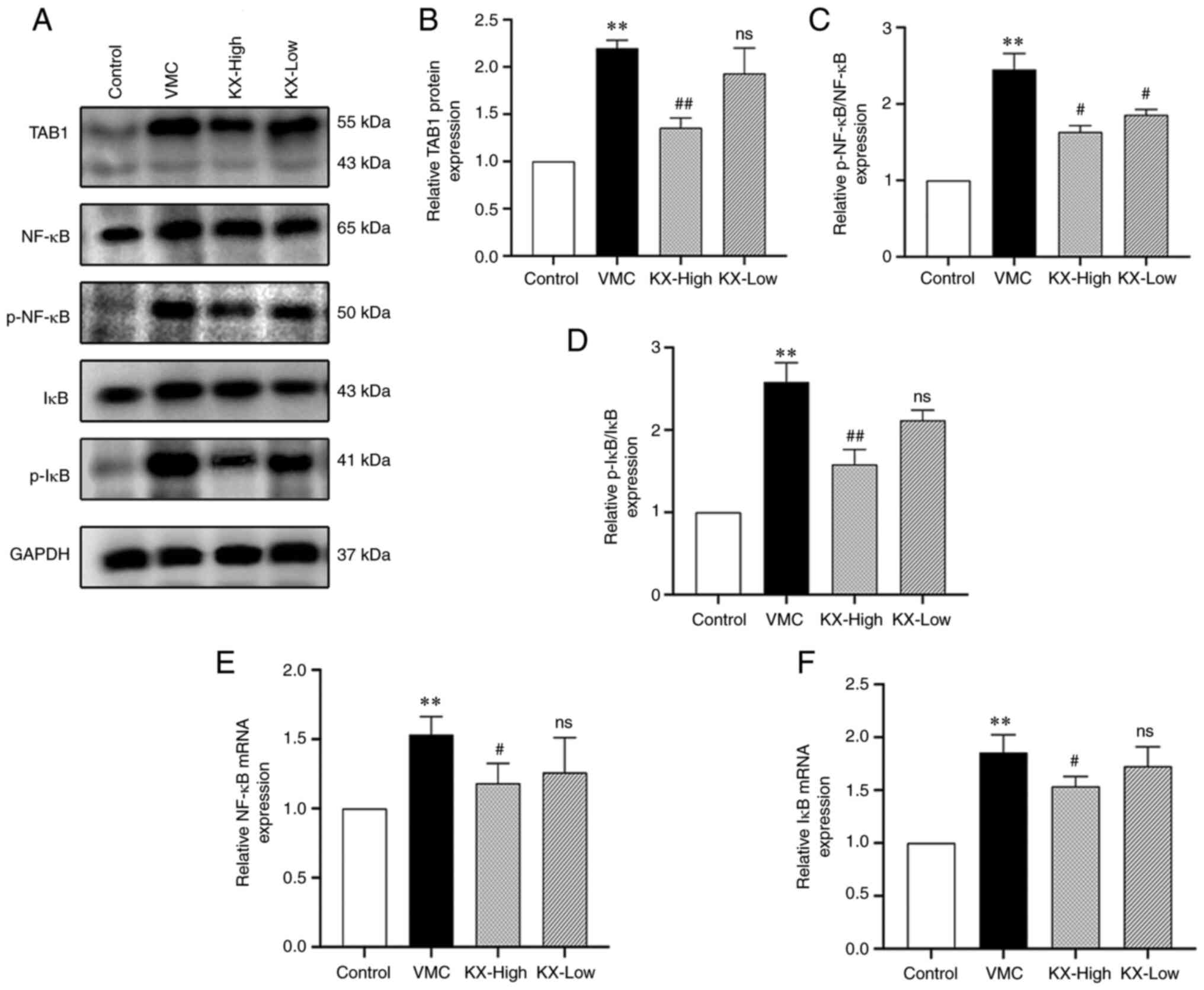|
1
|
Putschoegl A and Auerbach S: Diagnosis,
evaluation, and treatment of myocarditis in children. Pediatr Clin
North Am. 67:855–874. 2020.PubMed/NCBI View Article : Google Scholar
|
|
2
|
Doolan A, Langlois N and Semsarian C:
Causes of sudden cardiac death in young Australians. Med J Aust.
180:110–112. 2004.PubMed/NCBI View Article : Google Scholar
|
|
3
|
Fairley CK, Ryan M, Wall PG and Weinberg
J: The organisms reported to cause infective myocarditis and
pericarditis in England and Wales. J Infect. 32:223–225.
1996.PubMed/NCBI View Article : Google Scholar
|
|
4
|
Woodruff JF: Viral myocarditis. A review.
Am J Pathol. 101:425–484. 1980.PubMed/NCBI
|
|
5
|
He Y, Chipman PR, Howitt J, Bator CM,
Whitt MA, Baker TS, Kuhn RJ, Anderson CW, Freimuth P and Rossmann
MG: Interaction of coxsackievirus B3 with the full length
coxsackievirus-adenovirus receptor. Nat Struct Biol. 8:874–878.
2001.PubMed/NCBI View Article : Google Scholar
|
|
6
|
Pollack A, Kontorovich AR, Fuster V and
Dec GW: Viral myocarditis-diagnosis, treatment options, and current
controversies. Nat Rev Cardiol. 12:670–680. 2015.PubMed/NCBI View Article : Google Scholar
|
|
7
|
Brucato A, Imazio M, Gattorno M, Lazaros
G, Maestroni S, Carraro M, Finetti M, Cumetti D, Carobbio A,
Ruperto N, et al: Effect of anakinra on recurrent pericarditis
among patients with colchicine resistance and corticosteroid
dependence: The AIRTRIP randomized clinical trial. JAMA.
316:1906–1912. 2016.PubMed/NCBI View Article : Google Scholar
|
|
8
|
Scott IC, Hajela V, Hawkins PN and
Lachmann HJ: A case series and systematic literature review of
anakinra and immunosuppression in idiopathic recurrent
pericarditis. J Cardiol Cases. 4:e93–e97. 2011.PubMed/NCBI View Article : Google Scholar
|
|
9
|
Tschöpe C, Ammirati E, Bozkurt B, Caforio
ALP, Cooper LT, Felix SB, Hare JM, Heidecker B, Heymans S, Hübner
N, et al: Myocarditis and inflammatory cardiomyopathy: Current
evidence and future directions. Nat Rev Cardiol. 18:169–193.
2021.PubMed/NCBI View Article : Google Scholar
|
|
10
|
Li FS and Weng JK: Demystifying
traditional herbal medicine with modern approach. Nat Plants.
3(17109)2017.PubMed/NCBI View Article : Google Scholar
|
|
11
|
Niu Y, Dong Q and Li R: Matrine regulates
Th1/Th2 cytokine responses in rheumatoid arthritis by attenuating
the NF-κB signaling. Cell Biol Int. 41:611–621. 2017.PubMed/NCBI View Article : Google Scholar
|
|
12
|
Zheng X, Wang S, Zou X, Jing Y, Yang R, Li
S and Wang F: Ginsenoside Rb1 improves cardiac function and
remodeling in heart failure. Exp Anim. 66:217–228. 2017.PubMed/NCBI View Article : Google Scholar
|
|
13
|
Wang QW, Yu XF, Xu HL, Zhao XZ and Sui DY:
Ginsenoside re improves isoproterenol-induced myocardial fibrosis
and heart failure in rats. Evid Based Complement Alternat Med.
2019(3714508)2019.PubMed/NCBI View Article : Google Scholar
|
|
14
|
Liu M, Lin Y, Xu H, Li L and Ding T:
Combination of Sophora flavescens alkaloids and Panax
quinquefolium saponins modulates different stages of
experimental autoimmune myocarditis via the NF-κB and TGF-β1
pathways. Exp Ther Med. 24(570)2022.PubMed/NCBI View Article : Google Scholar
|
|
15
|
Aretz HT: Myocarditis: The dallas
criteria. Hum Pathol. 18:619–624. 1987.PubMed/NCBI View Article : Google Scholar
|
|
16
|
Livak KJ and Schmittgen TD: Analysis of
relative gene expression data using real-time quantitative PCR and
the 2(-Delta Delta C(T)) method. Methods. 25:402–408.
2001.PubMed/NCBI View Article : Google Scholar
|
|
17
|
Sinagra G, Anzini M, Pereira NL, Bussani
R, Finocchiaro G, Bartunek J and Merlo M: Myocarditis in clinical
practice. Mayo Clin Proc. 91:1256–1266. 2016.PubMed/NCBI View Article : Google Scholar
|
|
18
|
Liu M, Lin Y, Xu H, Wang X, Liu B, Fan M,
Ding T and Li L: Mechanism of the combination of KuShen and
XiYangShen on myocarditis based on network pharmacology and animal
experiments. Pharmacol Res-Mod Chin Med. 4(100141)2022.
|
|
19
|
Błyszczuk P: Myocarditis in humans and in
experimental animal models. Front Cardiovasc Med.
6(64)2019.PubMed/NCBI View Article : Google Scholar
|
|
20
|
Lasrado N and Reddy J: An overview of the
immune mechanisms of viral myocarditis. Rev Med Virol. 30:1–14.
2020.PubMed/NCBI View
Article : Google Scholar
|
|
21
|
Kandolf R, Ameis D, Kirschner P, Canu A
and Hofschneider PH: In situ detection of enteroviral genomes in
myocardial cells by nucleic acid hybridization: An approach to the
diagnosis of viral heart disease. Proc Natl Acad Sci USA.
84:6272–6276. 1987.PubMed/NCBI View Article : Google Scholar
|
|
22
|
Badorff C, Lee GH, Lamphear BJ, Martone
ME, Campbell KP, Rhoads RE and Knowlton KU: Enteroviral protease 2A
cleaves dystrophin: Evidence of cytoskeletal disruption in an
acquired cardiomyopathy. Nat Med. 5:320–326. 1999.PubMed/NCBI View
Article : Google Scholar
|
|
23
|
Huber SA, Sartini D and Exley M:
Vgamma4(+) T cells promote autoimmune CD8(+) cytolytic T-lymphocyte
activation in coxsackievirus B3-induced myocarditis in mice: Role
for CD4(+) Th1 cells. J Virol. 76:10785–10790. 2002.PubMed/NCBI View Article : Google Scholar
|
|
24
|
Izumi T, Takehana H, Matsuda C, Yokoyama
H, Kohno K, Suzuki K and Inomata T: Experimental autoimmune
myocarditis and its pathomechanism. Herz. 25:274–278.
2000.PubMed/NCBI View Article : Google Scholar
|
|
25
|
Esfandiarei M and McManus BM: Molecular
biology and pathogenesis of viral myocarditis. Annu Rev Pathol.
3:127–155. 2008.PubMed/NCBI View Article : Google Scholar
|
|
26
|
Liu T, Zhang M, Niu H, Liu J, Ruilian M,
Wang Y, Xiao Y, Xiao Z, Sun J, Dong Y and Liu X: Astragalus
polysaccharide from Astragalus Melittin ameliorates inflammation
via suppressing the activation of TLR-4/NF-κB p65 signal pathway
and protects mice from CVB3-induced virus myocarditis. Int J Biol
Macromol. 126:179–186. 2019.PubMed/NCBI View Article : Google Scholar
|
|
27
|
Gu X, Li Y, Chen K, Wang X, Wang Z, Lian
H, Lin Y, Rong X, Chu M, Lin J and Guo X: Exosomes derived from
umbilical cord mesenchymal stem cells alleviate viral myocarditis
through activating AMPK/mTOR-mediated autophagy flux pathway. J
Cell Mol Med. 24:7515–7530. 2020.PubMed/NCBI View Article : Google Scholar
|
|
28
|
Kubota T, Bounoutas GS, Miyagishima M,
Kadokami T, Sanders VJ, Bruton C, Robbins PD, McTiernan CF and
Feldman AM: Soluble tumor necrosis factor receptor abrogates
myocardial inflammation but not hypertrophy in cytokine-induced
cardiomyopathy. Circulation. 101:2518–2525. 2000.PubMed/NCBI View Article : Google Scholar
|
|
29
|
Kraft L, Erdenesukh T, Sauter M, Tschöpe C
and Klingel K: Blocking the IL-1β signalling pathway prevents
chronic viral myocarditis and cardiac remodeling. Basic Res
Cardiol. 114(11)2019.PubMed/NCBI View Article : Google Scholar
|
|
30
|
Yue-Chun L, Gu XH, Li-Sha G, Zhou DP, Xing
C, Guo XL, Pan LL, Song SY, Yu LL, Chen GY, et al: Vagus nerve
plays a pivotal role in CD4+ T cell differentiation during
CVB3-induced murine acute myocarditis. Virulence. 12:360–376.
2021.PubMed/NCBI View Article : Google Scholar
|
|
31
|
Sen R and Baltimore D: Multiple nuclear
factors interact with the immunoglobulin enhancer sequences. Cell.
46:705–716. 1986.PubMed/NCBI View Article : Google Scholar
|
|
32
|
Shim JH, Xiao C, Paschal AE, Bailey ST,
Rao P, Hayden MS, Lee KY, Bussey C, Steckel M, Tanaka N, et al:
TAK1, but not TAB1 or TAB2, plays an essential role in multiple
signaling pathways in vivo. Genes Dev. 19:2668–2681.
2005.PubMed/NCBI View Article : Google Scholar
|
|
33
|
Cheng Z, Taylor B, Ourthiague DR and
Hoffmann A: Distinct single-cell signaling characteristics are
conferred by the MyD88 and TRIF pathways during TLR4 activation.
Sci Signal. 8(ra69)2015.PubMed/NCBI View Article : Google Scholar
|
|
34
|
Xue YL, Zhang SX, Zheng CF, Li YF, Zhang
LH, Hao YF, Wang S and Li XW: Silencing of STAT4 protects against
autoimmune myocarditis by regulating Th1/Th2 immune response via
inactivation of the NF-κB pathway in rats. Inflammation.
42:1179–1189. 2019.PubMed/NCBI View Article : Google Scholar
|
|
35
|
Pan A, Tan Y, Wang Z and Xu G: STAT4
silencing underlies a novel inhibitory role of microRNA-141-3p in
inflammation response of mice with experimental autoimmune
myocarditis. Am J Physiol Heart Circ Physiol. 317:H531–H540.
2019.PubMed/NCBI View Article : Google Scholar
|
|
36
|
Zhu Z, Xueying L, Chunlin L, Wen X,
Rongrong Z, Jing H, Meilan J, Yuwei X and Zili W: Effect of
berberine on LPS-induced expression of NF-κB/MAPK signalling
pathway and related inflammatory cytokines in porcine intestinal
epithelial cells. Innate Immun. 26:627–634. 2020.PubMed/NCBI View Article : Google Scholar
|
|
37
|
Hu J, Luo J, Zhang M, Wu J, Zhang Y, Kong
H, Qu H, Cheng G and Zhao Y: Protective effects of radix sophorae
flavescentis carbonisata-based carbon dots against ethanol-induced
acute gastric ulcer in rats: Anti-inflammatory and antioxidant
activities. Int J Nanomedicine. 16:2461–2475. 2021.PubMed/NCBI View Article : Google Scholar
|
|
38
|
Liu ZL, Liu ZJ, Liu JP, Yang M and Kwong
J: Herbal medicines for viral myocarditis. Cochrane Database Syst
Rev. (CD003711)2010.PubMed/NCBI View Article : Google Scholar
|
|
39
|
Matsumori A, Wang H, Abelmann WH and
Crumpacker CS: Treatment of viral myocarditis with ribavirin in an
animal preparation. Circulation. 71:834–839. 1985.PubMed/NCBI View Article : Google Scholar
|



















